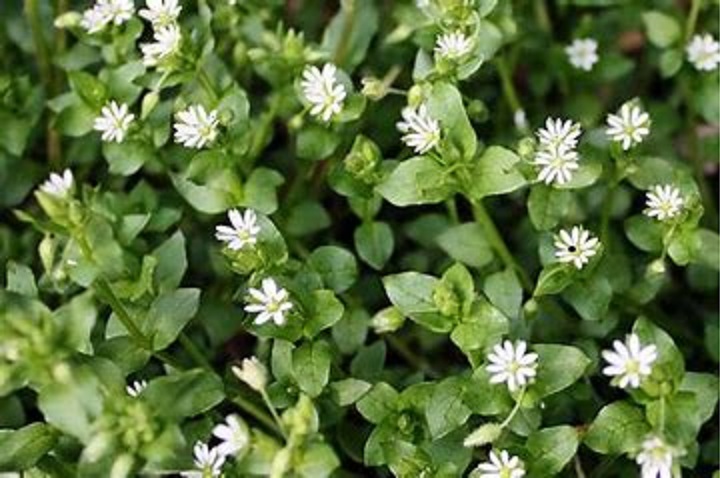Chickweed (Stellaria media) is a common weed that you find in gardens, lawns, and other moist areas. It is native to Europe, but you can find in many parts of the world. Chickweed is a nutritious and medicinal plant that you can use to treat a variety of ailments. Here’s what you need to know about foraging, preparing, and the benefits of chickweed:

- Foraging for chickweed: Chickweed is easy to identify, with small, white flowers and delicate, pointed leaves. It grows low to the ground in a sprawling manner, and you can find it in moist, shady areas. Do not harvest in areas treated with pesticides or other chemicals.
- Preparing chickweed. Use both the leaves and stems of chickweed raw or cooked. The leaves have a mild, spinach-like flavor and you can add them to salads, sandwiches, or cooked dishes. Boil or steam the stems and eat them like asparagus. Dry Chickweed to make a very nice herbal tea.
- Chickweed has been used for centuries to treat a variety of ailments due to it’s numerousalleged medicinal properties. It is a natural astringent, making it useful for treating cuts and wounds. Some people use chickweed to treat kidney and urinary tract problems as well as respiratory problems, such as bronchitis and asthma. Chickweed is also high in nutrients, including vitamins A, C, and D, and minerals like calcium, magnesium, and iron.
Overall, chickweed is a useful and nutritious plant that is worth considering when foraging. Properly identify chickweed and avoid harvesting in areas that you know are treated with chemicals. As with any foraged plant, it is also important to consult with a professional or expert before using it for medicinal purposes.
Additional Uses for Chickweed
- You can dry Chickweed to make a tea. To make the tea, simply steep a few dried leaves in hot water for 5-10 minutes. Chickweed tea has a mild, slightly sweet flavor and may have astringent, diuretic, and respiratory-supportive properties.
- Use chickweed in skin care products: Chickweed has natural astringent and anti-inflammatory properties, making it useful in skin care products. Use it to make a soothing skin toner or added to lotions and creams to help calm irritated skin.
How To Identify Chickweed
It is easy to identify, with the following characteristics:
- Small, white flowers: Chickweed has small, white flowers that are about 1/4 inch in diameter. The flowers have five petals and are arranged in clusters along the stem.
- Pointed leaves: Chickweed has delicate, pointed leaves that are about 1/2 inch long. The leaves are oval-shaped and have a shiny, smooth appearance.
- Sprawling growth habit: Chickweed grows low to the ground in a sprawling manner, with stems that can reach up to 12 inches in length. It tends to grow in moist, shady areas.
- Chickweed has fine hairs on the stems and leaves, which you can feel by running your hand over the plant.